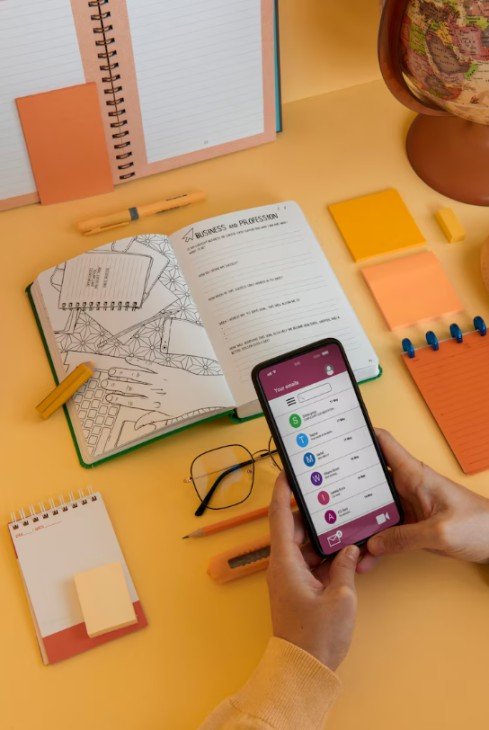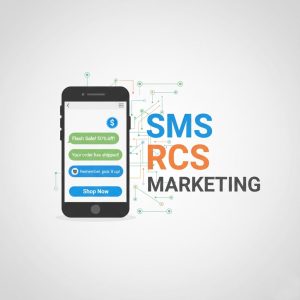How to Market a Shopify Mobile App: A Complete Strategy Guide

The Mobile Commerce Revolution
Due to mobile shopping becoming popular worldwide the E-commerce landscape has taken a tremendous turn in recent years. As a Shopify shop owner and developer though, simply creating a mobile app is only the halfway point. The actual task is to make sure everyone knows about and uses your app. In a crowded marketplace, this is where things get difficult — how can you make sure that your app stands out above all others while still encouraging millions of people to download it and use it regularly?
In this all-things-it’s possible guide controls, we will explore the five proven strategies for marketing your Shopify mobile app. Whether you are starting from scratch or looking to breathe life into an existing one, these methods will help push visibility up, but also downloads–and ultimately revenue too.
Why Your Shopify Store Needs a Mobile App Strategy
Before diving into marketing tactics, it’s essential to understand why having a mobile app for your Shopify store is crucial in today’s digital marketplace:
- Enhanced User Experience: Mobile apps provide a smoother, more intuitive shopping experience compared to mobile websites, with faster load times and streamlined checkout processes.
- Customer Retention Tools: Push notifications, personalized offers, and loyalty programs built into your app create powerful touchpoints to engage customers.
- Competitive Advantage: Despite the growing importance of mobile commerce, many Shopify merchants haven’t yet invested in custom mobile apps, creating an opportunity for early adopters.
- Higher Conversion Rates: Mobile apps typically convert at rates 3x higher than mobile websites, according to research from Shopify’s commerce trends report.
- Valuable Customer Data: Apps provide deeper insights into customer behavior and preferences, enabling more targeted marketing efforts.
Now that we understand the importance of a mobile app, let’s explore how to market it effectively.
Optimizing Your App Store Presence for Maximum Discovery
Your app store listing is often the first touchpoint potential users have with your app. Optimizing this presence is critical for discovery and conversion:
App Store Optimization (ASO) Fundamentals
ASO is to app stores what SEO is to Google—it’s the process of optimizing your app listing to rank higher in search results and increase visibility. Key elements include:
- Keyword-Rich Title and Description: Research relevant keywords that your target audience uses when searching for shopping apps. Include these naturally in your app title and description.
- Compelling Screenshots and Videos: Create visually appealing screenshots that showcase your app’s best features. A short demo video can increase conversion rates by up to 35%.
- Ratings and Reviews Strategy: Positive reviews significantly impact download decisions. Implement in-app prompts to encourage satisfied users to leave reviews, and address negative feedback promptly.
- Regular Updates: App stores favor apps that are regularly updated. Each update provides an opportunity to improve ASO elements and signal to algorithms that your app is actively maintained.
- A/B Testing: Test different icons, screenshots, and descriptions to identify which combinations drive the highest conversion rates.
Leveraging Your Existing Shopify Customer Base
One of the most effective ways to market your Shopify mobile app is by leveraging your existing customer base. These customers already know and trust your brand, making them prime candidates for app adoption.
Strategies for Converting Web Customers to App Users
- Strategic App Banners: Implement smart banners on your mobile website that promote your app with a direct download link.
- Email Marketing Campaigns: Launch targeted email campaigns highlighting the exclusive benefits of your mobile app. Segment your audience to personalize messaging based on purchase history or browsing behavior.
- Loyalty Program Integration: Offer additional points, discounts, or perks for customers who download and use your app, creating tangible incentives for adoption.
- QR Codes on Physical Packaging: If you ship physical products, include QR codes on packaging that direct customers to download your app, bridging the offline-online gap.
- Post-Purchase Nudges: After a customer completes a purchase on your website, include app download prompts in order confirmation emails and thank-you pages.
For detailed implementation guides and advanced strategies for converting your existing customers into loyal app users, check out our comprehensive tutorials at mobiledominate.com.
Paid Acquisition Channels for Mobile App Growth
While organic methods form the foundation of your app marketing strategy, strategic paid acquisition can accelerate growth significantly:
Effective Paid Marketing Channels
- App Install Ads: Platforms like Facebook, Instagram, and TikTok offer specialized ad formats designed specifically to drive app installations. These ads typically include direct download buttons that streamline the conversion process.
- Google App Campaigns: Formerly known as Universal App Campaigns, this advertising solution displays your app across Google’s entire network, including Search, Play Store, YouTube, and the Display Network.
- Influencer Partnerships: Collaborating with influencers in your niche can generate authentic promotion and reach highly engaged audiences likely to be interested in your products.
- Retargeting Campaigns: Target users who have visited your website but haven’t downloaded your app yet with specific ads highlighting the app’s benefits.
- Apple Search Ads: For iOS apps, these ads appear at the top of App Store search results, capturing high-intent users actively looking for solutions like yours.
When implementing paid strategies, start with small budgets to test different channels and creative approaches. Closely monitor key metrics like Cost Per Install (CPI), Customer Acquisition Cost (CAC), and Lifetime Value (LTV) to optimize your spending.
Content Marketing Strategies for App Promotion
Content marketing provides an opportunity to showcase your app’s value while building authority in your niche:
Creating Content That Drives App Downloads
- Tutorial Content: Develop comprehensive guides that demonstrate how your app solves specific problems or enhances the shopping experience.
- Comparison Articles: Create content that compares mobile shopping experiences, highlighting the advantages of your app over mobile websites.
- Video Demonstrations: Produce engaging video content showing your app in action, focusing on unique features and user benefits.
- Case Studies: Share success stories of customers who have benefited from using your app, with concrete metrics and testimonials.
- SEO-Optimized Blog Posts: Create articles targeting keywords related to mobile shopping in your niche, establishing your brand as an authority.
According to research from ContentMarketingInstitute.com, brands that maintain consistent, high-quality content marketing efforts see 6x higher conversion rates than those that don’t.
Retention and Engagement: The Post-Download Challenge
Acquiring users is only the beginning; keeping them engaged is crucial for long-term success:
Strategies for Increasing User Retention
- Personalized Push Notifications: Send timely, relevant notifications based on user behavior, preferences, and purchase history.
- In-App Exclusive Offers: Create special promotions available only through your app to incentivize regular usage.
- Seamless Omnichannel Experience: Ensure consistent experiences across all channels, allowing users to start shopping on one device and continue on another.
- Regular Feature Updates: Continuously improve your app based on user feedback and usage data, announcing new features to re-engage dormant users.
- Gamification Elements: Incorporate rewarding mechanics like points, badges, or tiered rewards to make shopping more engaging.
Measuring Success: Key Metrics for App Marketing
To optimize your marketing efforts, track these essential metrics:
- Download Numbers: The most basic measurement of your marketing effectiveness.
- User Retention Rates: The percentage of users who continue using your app over time (7-day, 30-day, 90-day).
- Session Length and Frequency: How long and how often users engage with your app.
- Conversion Rate: The percentage of app users who complete purchases.
- Average Order Value (AOV): How much app users spend per transaction compared to web shoppers.
- Customer Lifetime Value (CLV): The total revenue you can expect from a single app user throughout their relationship with your brand.
- Return on Ad Spend (ROAS): For paid campaigns, measuring the revenue generated relative to marketing spend.
Conclusion: Building a Comprehensive Shopify App Marketing Strategy
Marketing a Shopify mobile app requires a multi-faceted approach that spans both acquisition and retention strategies. The most successful app marketing plans integrate these elements into a cohesive strategy that evolves based on performance data and changing market conditions.
Remember that app marketing is not a one-time effort but an ongoing process. By consistently applying and refining the strategies outlined in this guide, you’ll be well-positioned to grow your app’s user base and drive meaningful business results.
For more advanced strategies and technical implementation guidance for marketing your Shopify mobile app, visit our specialized resource center at mobiledominate.com, where we offer step-by-step tutorials and case studies from successful e-commerce brands.
By investing in a thoughtful, comprehensive marketing strategy for your Shopify mobile app, you’re not just promoting a digital product—you’re building a powerful new channel that can transform your e-commerce business and create deeper, more valuable relationships with your customers.





